
Humidification against Sick Building Syndrome
Humidification against Sick Building Syndrome
Relative humidity between 40% and 60% helps to : • Reduce infection transmission, • Reduce bioaerosol infectivity, • Reduce SBS disorders.
SICK BUILDING SYNDROME (SBS)
It defines the symptoms of health disorders suffered by building occupants. The longer a person stays
in the building, the worse their symptoms get. An improvement generally occurs when people leave
the building.
Symptoms may include dry eyes, headaches, tiredness, dry skin, rashes, blocked or runny nose and
result in a high absenteeism rate.

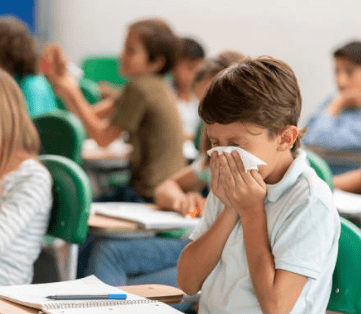
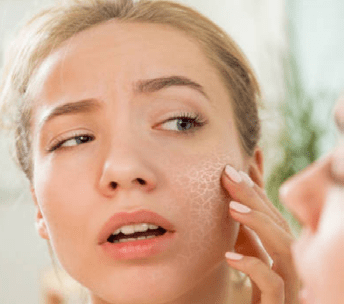
Several interrelated physical factors such as inadequate ventilation, uncomfortable temperatures, low
relative humidity and poor lighting can have a cumulative effect and increase the severity of SBS(1).
When the indoor relative humidity is about 40% to 60% (7 to 10 grams of moisture per kg of dry air), symptoms like dry skin, dry eyes, stuffy nose and respiratory infection are reduced.
Maintaining the right indoor climate and controlled humidification also allows to reduce the heating
costs: 1°C of heating can be saved by increasing the relative humidity from 20% to 50%.
(A 10% increase in relative humidity results in a feeling of warmth equivalent to a 0.3°C increase in operating temperature(2))

Adequate relative humidity protects your eyes
A relative humidity maintained between 40%-60% helps prevent the evaporation of the lacrimal film and SBS disorders associated with.
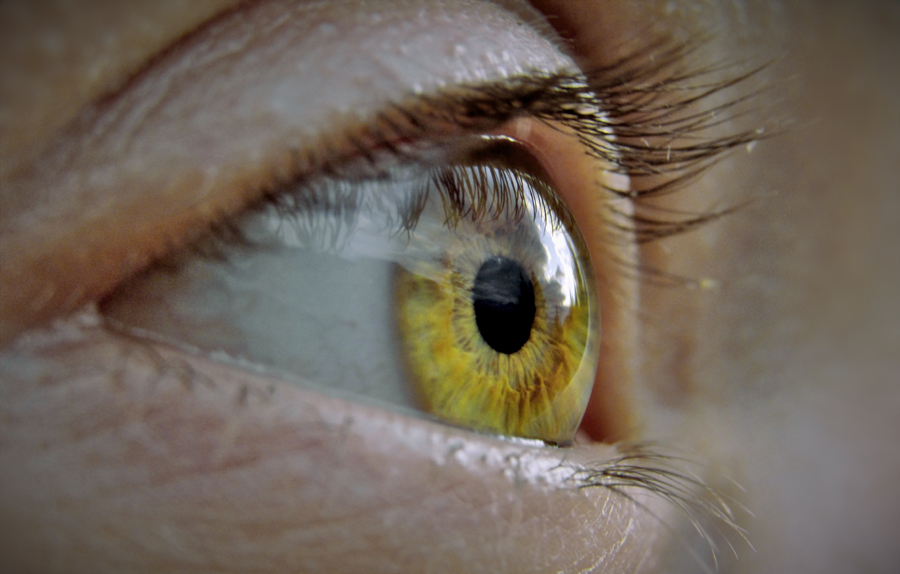
Tear or tear film is a thin, almost invisible barrier that
covers the eye. It consists of three very thin layers (lipid, water and mucin layers). Its function is to protect
the ocular surface (eye, cornea and conjunctiva) against
irritation and infections. The low relative humidity is a
proven risk factor for developing Dry Eye disease(3).
Fine dust particles (allergens and pathogens) can
penetrate the conjunctiva through cracks in the tear film
layers. The thickness of the tear film also depends on
air humidity.
If room air is kept dry, evaporation of tear fluid increases. Eye and conjunctiva irritation affects visual
performance, which can lead to fatigue, dizziness and headaches due to tension in the forehead, back
of the head or neck.

Adequate relative humidity protects your skin
Maintaining a relative humidity between 40 % and 60 % prevents from dehydration of NMF (natural moisturizing factors) and SBS disorders associated with dry skin.
Patients with atopic dermatitis or psoriasis generally experience worsening symptoms in winter(7) and
dry environments produced by air conditioning or central heating. In general, increased skin roughness can be observed after 3 hours of exposure to 30% relative humidity(8).
Skin is the largest organ of the human body and acts
as a self-healing barrier that protects against shocks,
dangerous chemicals or microorganisms. It also prevents from the uncontrolled loss of water and is important for thermoregulation of our body (homeostasis)(9).
Skin is composed of several layers (epidermis, dermis
and hypodermis) and sub-layers, including the stratum
corneum (SC), which is the outer part of the epidermis.
In a dry air environment, the skin will be dehydrated
and loose its protective abilities.
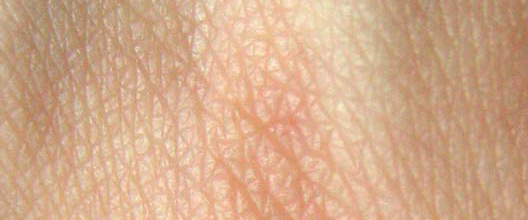

Skin has a very low permeability, it is not totally tight(10). At a constant air temperature, moisturization of
the skin increases with the humidity of the air(11,12) thanks to the sorption ability of the SC, NMF and SC
lipids


Adequate relative humidity protects your nose mucosa
Maintaining relative humidity between 40%-60% helps prevent from cold nose and nosebleeds.
Nose is the access to our lungs, and its mucous membrane filter heats and humidifies the air we breath.
It is equipped with sensors that analyze smell and degree of heat (hot/cold) in the air(13). The nasal
mucous membrane can be damaged by prolonged exposure to dry air, making it more vulnerable to
congestion and infection.


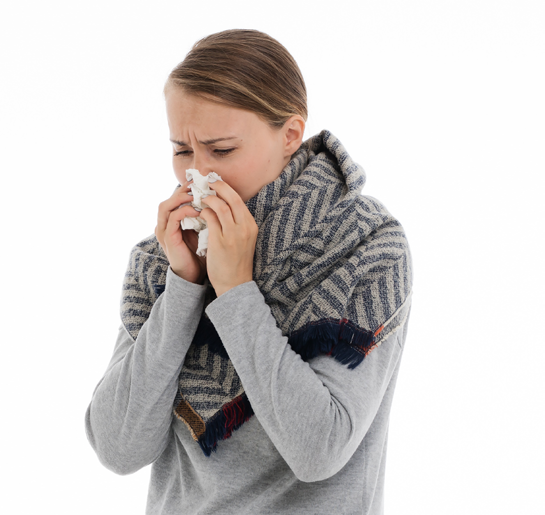
When nasal hair cells are damaged, they are replaced by goblet cells, resulting in hypersecretion of mucin. The loss of hair cells also decreases
mucociliary activity (14), resulting in changes in mucociliary clearance:
- nasal congestion.
- the respiratory tract is altered, making it more susceptible to infections
(15), such as those caused by rhinovirus (cold) and influenza virus (flu).
Human rhinoviruses account for more than 50 % of upper respiratory
tract infections. They may also lead to sinusitis, bronchitis, bronchiolitis,
hypothermia, sore throat, and otitis media.
Low humidity increases the incidence of influenza outbreaks. High transmission and infectivity of
respiratory viruses is strongly associated with low relative humidity. To reduce risks, it is important to
maintain indoor relative humidity between 40% and 60% (16,17).
Adequate relative humidity prevents ESD
ESD is a particularly dangerous phenomenon because you are the source of
these transients. It is the static electricity which builds up on your body. The
jolt you get from touching a doorknob or shaking someone’s hand is ESD18.
Maintaining relative humidity between 40% and 60%, reduces the accumulation of static electricity in the air, and eliminates its consequences :
discharges in contact with other people or metal objects, clothing charged
with static electricity…


Sources: 1) Sick building syndrome, World Health Organization Regional Office for Europe : https://www.wondermakers.com/Portals/0/docs/Sick%20building%20syndrome%20by%20 WHO.pdf 2) ISO 7730:2005 Ergonomics of the thermal environment — Analytical determination and interpretation of thermal comfort using calculation of the PMV and PPD indices and local thermal comfort criteria 3) Song P, Xia W, Wang M, et al. Variations of dry eye disease prevalence by age, sex and geographic characteristics in China: a systematic review and meta-analysis. J Glob Health. 2018;8(2):020503. doi:10.7189/jogh.08.020503a systematic review and meta-analysis 4)Rolando M, Valente C. Establishing the tolerability and performance of tamarind seed polysaccharide (TSP) in treating dry eye syndrome: results of a clinical study. BMC Ophthalmol. 2007;7:5. Published 2007 Mar 29. doi:10.1186/1471-2415-7-5 5) Mantelli F, Argüeso P. Functions of ocular surface mucins in health and disease. Curr Opin Allergy Clin Immunol. 2008;8(5):477-483. doi:10.1097/ACI.0b013e32830e6b04 6) Stefan Rief | Mitja Jurec i c LUFTFEUCHTIGKEIT AM BÜROARBEITSPLATZ 7) Denda M, Sato J, Tsuchiya T, Elias PM, Feingold KR. Low humidity stimulates epidermal DNA synthesis and amplifies the hyperproliferative response to barrier disruption: implication for seasonal exacerbations of inflammatory dermatoses. The Journal of Investigative Dermatology. 1998 Nov;111(5):873-878. DOI: 10.1046/j.1523-1747.1998.00364.x. 8)Spiegl, A.: Einfluss der Luftfeuchtigkeit auf die Hautrauhigkeit bei Patienten mit atopischem Ekzem. Dissertation Universität München 1998. 9) Augustijns, Patrick & Brewster, Marcus. (2007). Solvent Systems and Their Selection in Pharmaceutics and Biopharmaceutics. 10.1007/978-0-387-69154-1. 10) Silva, C.L. & Topgaard, D & Kocherbitov, Vitaly & Sousa, Joao & Pais, Alberto & Sparr, Emma. (2007). Stratum corneum hydration: Phase transformations and mobility in stratum corneum, extracted lipids and isolated corneocytes. Biochimica et biophysica acta. 1768. 2647-59. 10.1016/j.bbamem.2007.05.028. 11) Mole R. H. (1948). The relative humidity of the skin. The Journal of physiology, 107(4), 399–411. https://doi.org/10.1113/jphysiol.1948.sp004284 12) Wildnauer RH, Bothwell JW, Douglass AB. Stratum corneum biomechanical properties. I. Influence of relative humidity on normal and extracted human stratum corneum. J Invest Dermatol. 1971;56(1):7278. doi:10.1111/1523-1747.ep12292018 13) Baraniuk JN, Merck SJ. Neuroregulation of human nasal mucosa. Ann N Y Acad Sci. 2009;1170:604-609. doi:10.1111/j.1749-6632.2009.04481.x 14) Bernstein, Jonathan & Singh, Umesh. (2015). Neural Abnormalities in Nonallergic Rhinitis. Current allergy and asthma reports. 15. 511. 10.1007/s11882-015-0511-7. 15) Blaas D, Fuchs R. Mechanism of human rhinovirus infections. Mol Cell Pediatr. 2016;3(1):21. doi:10.1186/s40348-016-0049-3 16) Lowen AC, Mubareka S, Steel J, Palese P. Influenza virus transmission is dependent on relative humidity and temperature. PLoS Pathog. 2007;3(10):1470-1476. doi:10.1371/ journal.ppat.0030151 17) Kudo E, Song E, Yockey LJ, Rakib T, Wong PW, et al. 2019. Low ambient humidity impairs barrier function and innate resistance against influenza infection. PNAS 116:10905–10 18) Armstrong Handbook HB-501 - 11/97 08/2020 Author: P.E. David, Pharmacist and HVAC specialist at Armstrong International

